Employee Commitment in Virtual Teams: State of the Art and Research Directions
DOI: 10.23977/acccm.2023.051108 | Downloads: 30 | Views: 1473
Author(s)
Yu Jie 1
Affiliation(s)
1 City University, Selangor, Malaysia
Corresponding Author
Yu JieABSTRACT
The digital era has revolutionized the modern workplace, bringing forth new challenges and opportunities that impact employee commitment. This paper aims to provide a thorough examination of the existing literature on employee commitment in virtual teams while offering valuable insights for future research. By conducting an in-depth analysis of remote teams, digital communication platforms, trust dynamics, communication patterns, and work-life balance within virtual work settings, this review paper reveals the intricate interplay between technology and employee commitment. Drawing upon compelling research findings, it demonstrates how affective commitment, emotional attachment, and organizational identity are strongly influenced by these factors. Furthermore, this review highlights the pressing need for further investigation into the complex relationship between remote working technology and employee commitment. By addressing these knowledge gaps, this study offers practical implications for businesses and paves the way for future research endeavours in this field.
KEYWORDS
Employee commitment, Virtual work settings, Remote teams, Digital communication platforms, Trust dynamics, Communication patterns, Work-life balance, Review paperCITE THIS PAPER
Yu Jie, Employee Commitment in Virtual Teams: State of the Art and Research Directions. Accounting and Corporate Management (2023) Vol. 5: 47-56. DOI: http://dx.doi.org/10.23977/acccm.2023.051108.
REFERENCES
[1] Parker, S. K., & Grote, G. (2022). Automation, algorithms, and beyond: Why work design matters more than ever in a digital world. Applied Psychology, 71(4), 1171-1204.
[2] Presbitero, A. (2021). Communication accommodation within global virtual team: The influence of cultural intelligence and the impact on interpersonal process effectiveness. Journal of International Management, 27(1), 100809.
[3] Vuchkovski, D., Zalaznik, M., Mitręga, M., & Pfajfar, G. (2023). A look at the future of work: The digital transformation of teams from conventional to virtual. Journal of Business Research, 163, 113912.
[4] Chernyak-Hai, L., & Rabenu, E. (2018). The new era workplace relationships: Is social exchange theory still relevant? Industrial and Organizational Psychology, 11(3), 456-481.
[5] Tautz, D. C., Schübbe, K., & Felfe, J. (2022). Working from home and its challenges for transformational and health-oriented leadership. Frontiers in Psychology, 13, 1017316.
[6] Ali, A. D., Narine, L. K., Hill, P. A., & Bria, D. C. (2023). Factors Affecting Remote Workers’ Job Satisfaction in Utah: An Exploratory Study. International Journal of Environmental Research and Public Health, 20(9), 5736.
[7] Rafiei, M., Amini, M., & Foroozandeh, N. (2014). Studying the impact of the organizational commitment on the job performance. Management science letters, 4(8), 1841-1848.
[8] Meyer, J. P., & Allen, N. J. (1991). A three-component conceptualization of organizational commitment. Human Resource Management Review, 1(1), 61-89.
[9] Asatiani, A., Hämäläinen, J., Penttinen, E., & Rossi, M. (2021). Constructing continuity across the organisational culture boundary in a highly virtual work environment. Information systems journal, 31(1), 62-93.
[10] Marques, V. C., & Berry, G. R. (2021). Enhancing work‐life balance using a resilience framework. Business and Society Review, 126(3), 263-281.
[11] Haar, J., & Brougham, D. (2022). Work antecedents and consequences of work-life balance: A two sample study within New Zealand. The International Journal of Human Resource Management, 33(4), 784-807.
[12] Sharma, J., & Dhar, R. L. (2016). Factors influencing job performance of nursing staff: mediating role of affective commitment. Personnel Review, 45(1), 161-182.
[13] Eisenberger, R., Rockstuhl, T., Shoss, M. K., Wen, X., & Dulebohn, J. (2019). Is the employee–organization relationship dying or thriving? A temporal meta-analysis. Journal of Applied Psychology, 104(8), 1036.
[14] Jaros, S. (2017). A critique of normative commitment in management research. Management Research Review, 40(5), 517-537.
[15] Khan, A. J., & Iqbal, J. (2020). Training and employee commitment: The social exchange perspective. Journal of Management Sciences, 7(1), 88-100.
[16] Kilroy, J., Dundon, T., & Townsend, K. (2023). Embedding reciprocity in human resource management: A social exchange theory of the role of frontline managers. Human Resource Management Journal, 33(2), 511-531.
[17] Joel, O., Moses, C., Igbinoba, E., Maxwell, O., Salau, O., & Omobolanle, A. (2022). Psychological contract and employee performance in the Nigerian manufacturing industry: A conceptual review. Academy of Entrepreneurship Journal, 28(1), 1-10.
[18] Zhao, H., Chen, Y., & Liu, W. (2023). Socially responsible human resource management and employee moral voice: Based on the self-determination theory. Journal of Business Ethics, 183(3), 929-946.
[19] Krajcsák, Z. (2020). The interdependence between the extended organizational commitment model and the self-determination theory. Journal of Advances in Management Research, 17(1), 1-18.
[20] Ghosh, D., & Gurunathan, L. (2015). Job embeddedness: A ten-year literature review and proposed guidelines. Global Business Review, 16(5), 856-866.
[21] Dechawatanapaisal, D. (2017). The mediating role of organizational embeddedness on the relationship between quality of work life and turnover: Perspectives from healthcare professionals. International Journal of Manpower, 38(5), 696-711.
[22] Singh, A. (2022). The mediating role of employee commitment between quality of work-life and job performance of the faculty. Industrial and Commercial Training, 54(2), 250-266.
[23] Youmans, A. R., Canby, N. K., & Córdova, J. V. (2022). College, career, commitment, oh my: how emerging adult women balance romantic relationships, career plans, and financial stability. Emerging Adulthood, 10(3), 804-814.
[24] Liden, R. C., Wayne, S. J., & Sparrowe, R. T. (2000). An Examination of the Mediating Role of Psychological Empowerment on the Relations between the Job, Interpersonal Relationships, and Work Outcomes. Journal of Applied Psychology, 85(3), 407-416.
[25] Norouzi, N., Kim, K., Bruder, G., Bailenson, J. N., Wisniewski, P., & Welch, G. F. (2022). The advantages of virtual dogs over virtual people: Using augmented reality to provide social support in stressful situations. International Journal of Human-Computer Studies, 165, 102838.
[26] Dunn, M. (2020). Making gigs work: digital platforms, job quality and worker motivations. New Technology, Work and Employment, 35(2), 232-249.
[27] Caringal-Go, J. F., Teng-Calleja, M., Bertulfo, D. J., & Manaois, J. O. (2022). Work-life balance crafting during COVID-19: Exploring strategies of telecommuting employees in the Philippines. Community, Work & Family, 25(1), 112-131.
[28] Zhang, L., Fan, C., Deng, Y., Lam, C. F., Hu, E., & Wang, L. (2019). Exploring the interpersonal determinants of job embeddedness and voluntary turnover: A conservation of resources perspective. Human Resource Management Journal, 29(3), 413-432.
[29] Talukder, A. M. H. (2019). Supervisor support and organizational commitment: The role of work–family conflict, job satisfaction, and work–life balance. Journal of Employment Counseling, 56(3), 98-116.
[30] Adisa, T. A., Mordi, C., & Osabutey, E. L. (2017). Exploring the implications of the influence of organisational culture on work-life balance practices: evidence from Nigerian medical doctors. Personnel Review, 46(3), 454-473.
[31] Akanji, B., Mordi, C., & Ajonbadi, H. A. (2020). The experiences of work-life balance, stress, and coping lifestyles of female professionals: insights from a developing country. Employee Relations: The International Journal, 42(4), 999-1015.
[32] Xu, S., Kee, K., & Mao, C. (2021). Multitasking and work-life balance: Explicating multitasking when working from home. Journal of Broadcasting & Electronic Media, 65(3), 397-425.
[33] Fernet, C., Austin, S., & Vallerand, R. J. (2012). The effects of work motivation on employee exhaustion and commitment: An extension of the JD-R model. Work & Stress, 26(3), 213-229.
[34] Tuğsal, T., & Ülgen, B. (2017). Work-life balance and social support as predictors of burnout: an exploratory analysis. International Journal of Academic Research in Business and Social Sciences, 7(3), 117-138.
[35] Bhende, P., Mekoth, N., Ingalhalli, V., & Reddy, Y. V. (2020). Quality of work life and work–life balance. Journal of Human Values, 26(3), 256-265.
[36] Kelliher, C., Richardson, J., & Boiarintseva, G. (2019). All of work? All of life? Reconceptualising work‐life balance for the 21st century. Human Resource Management Journal, 29(2), 97-112.
[37] Bader, A. K., Froese, F. J., & Kraeh, A. (2018). Clash of cultures? German expatriates' work‐life boundary adjustment in South Korea. European Management Review, 15(3), 357-374.
[38] Lee, Y., Tao, W., Li, J. Y. Q., & Sun, R. (2021). Enhancing employees’ knowledge sharing through diversity-oriented leadership and strategic internal communication during the COVID-19 outbreak. Journal of Knowledge Management, 25(6), 1526-1549.
[39] Kibozi, S. C., & Michael, F. (2018). Nexus between work-life balance practices and affective organisational commitment: The mediating role of transformational leadership style. Business Management Review, 21(1), 60-73.
| Downloads: | 41343 |
|---|---|
| Visits: | 746964 |
Sponsors, Associates, and Links
-
Information Systems and Economics

-
Accounting, Auditing and Finance

-
Industrial Engineering and Innovation Management
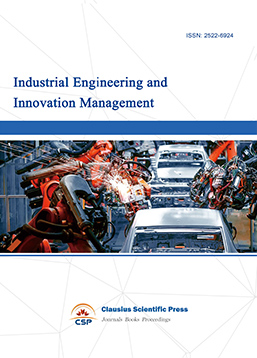
-
Tourism Management and Technology Economy

-
Journal of Computational and Financial Econometrics

-
Financial Engineering and Risk Management

-
Social Security and Administration Management

-
Population, Resources & Environmental Economics

-
Statistics & Quantitative Economics

-
Agricultural & Forestry Economics and Management
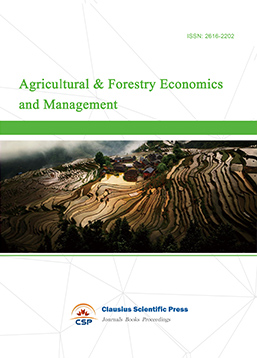
-
Social Medicine and Health Management
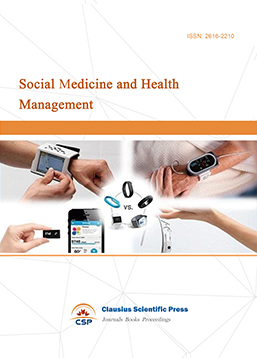
-
Land Resource Management
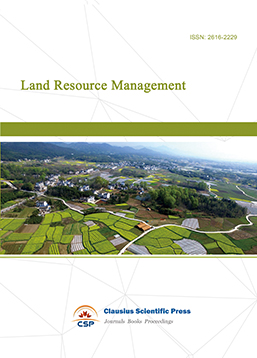
-
Information, Library and Archival Science

-
Journal of Human Resource Development

-
Manufacturing and Service Operations Management
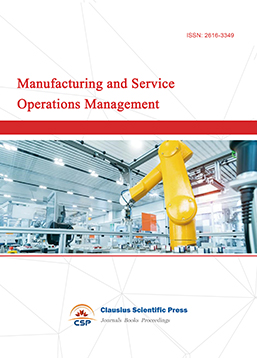
-
Operational Research and Cybernetics


 Download as PDF
Download as PDF